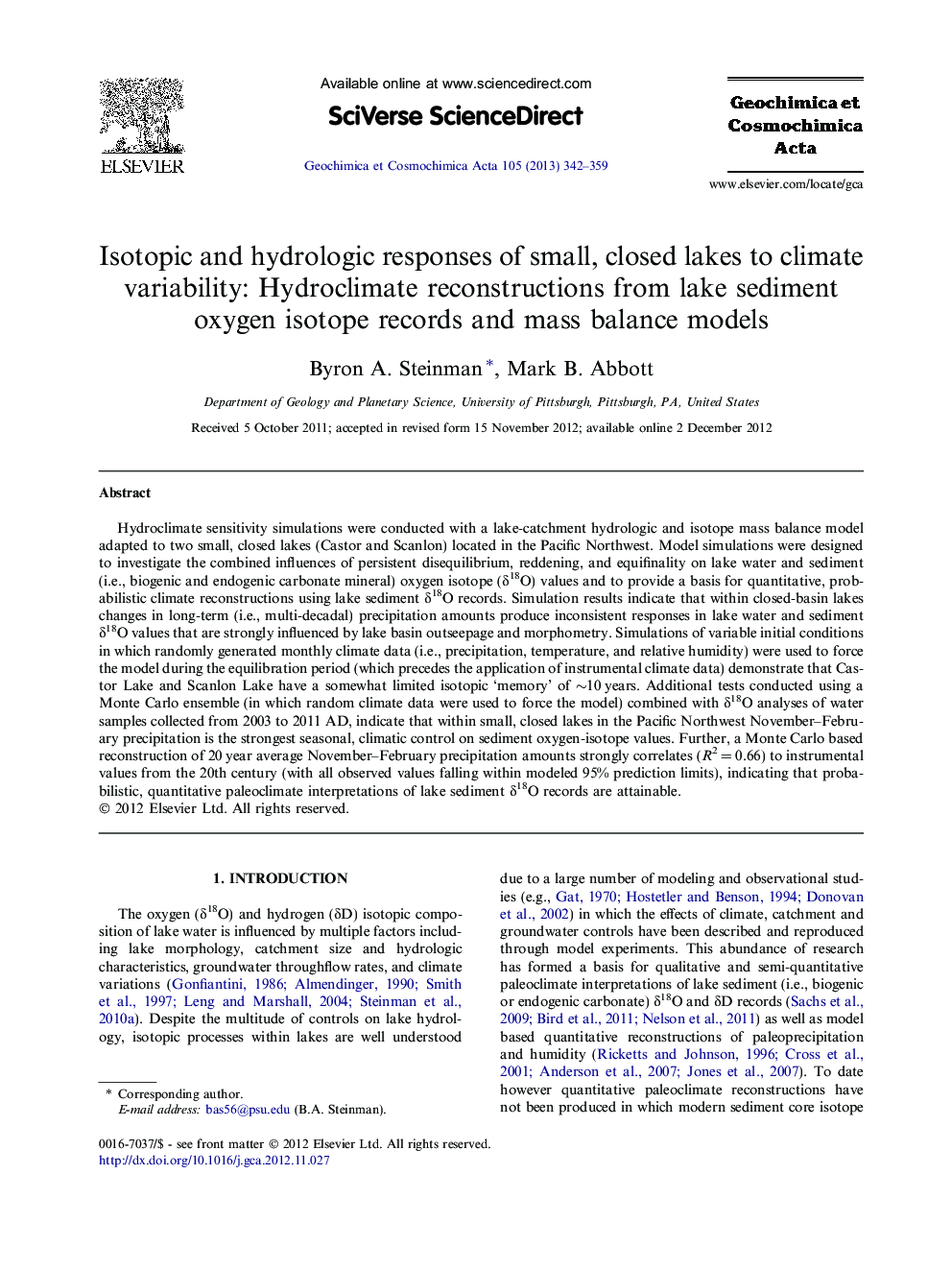| Article ID | Journal | Published Year | Pages | File Type |
|---|---|---|---|---|
| 4702557 | Geochimica et Cosmochimica Acta | 2013 | 18 Pages |
Hydroclimate sensitivity simulations were conducted with a lake-catchment hydrologic and isotope mass balance model adapted to two small, closed lakes (Castor and Scanlon) located in the Pacific Northwest. Model simulations were designed to investigate the combined influences of persistent disequilibrium, reddening, and equifinality on lake water and sediment (i.e., biogenic and endogenic carbonate mineral) oxygen isotope (δ18O) values and to provide a basis for quantitative, probabilistic climate reconstructions using lake sediment δ18O records. Simulation results indicate that within closed-basin lakes changes in long-term (i.e., multi-decadal) precipitation amounts produce inconsistent responses in lake water and sediment δ18O values that are strongly influenced by lake basin outseepage and morphometry. Simulations of variable initial conditions in which randomly generated monthly climate data (i.e., precipitation, temperature, and relative humidity) were used to force the model during the equilibration period (which precedes the application of instrumental climate data) demonstrate that Castor Lake and Scanlon Lake have a somewhat limited isotopic ‘memory’ of ∼10 years. Additional tests conducted using a Monte Carlo ensemble (in which random climate data were used to force the model) combined with δ18O analyses of water samples collected from 2003 to 2011 AD, indicate that within small, closed lakes in the Pacific Northwest November–February precipitation is the strongest seasonal, climatic control on sediment oxygen-isotope values. Further, a Monte Carlo based reconstruction of 20 year average November–February precipitation amounts strongly correlates (R2 = 0.66) to instrumental values from the 20th century (with all observed values falling within modeled 95% prediction limits), indicating that probabilistic, quantitative paleoclimate interpretations of lake sediment δ18O records are attainable.
